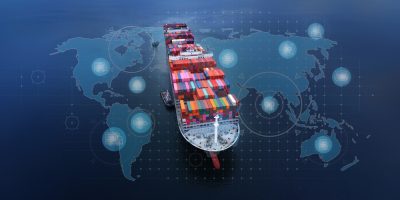-
Africa
The African Continental Free Trade Area (AfCFTA)
5 January 2023
- Contracts
- Distribution
Eventually, after more than 30 years of negotiations, the world is now looking at the first pan-African trade agreement, which entered into force in 2019: the African Continental Free Trade Area, or AfCFTA.
Africa, with its 55 countries and around 1.3 billion inhabitants, is the second largest continent in the world after Asia. The continent’s potential is huge: more than 50% of Africa’s population is under 20 years old and the population is growing at the fastest rate in the world. By 2050, one in four new-born babies is expected to be African. In addition, the continent is rich in fertile soil and raw materials.
For Western investors, Africa has become considerably more important in recent years. As a result, a considerable amount of international trade has emerged, not least promoted by the “Compact with Africa” initiative adopted by the G20 countries in 2017, also known as the “Marshall Plan with Africa”. Its focus is on expanding Africa’s economic cooperation with the G20 countries by strengthening private investment.
At the same time, however, intra-African trade has stagnated so far: partly still existing high intra-African tariffs, non-tariff barriers (NTBs), weak infrastructure, corruption, cumbersome bureaucracy, as well as non-transparent and inconsistent regulations, ensured that interregional exports could hardly develop and most recently accounted for only 17 % of the pan-African trade and only 0.36 % of world trade. It’s already been a long time since the African Union (AU) had put the creation of a common trade area on its agenda.
What is behind AfCFTA?
The establishment of a pan-African trade area was preceded by decades of negotiations, which finally resulted in the entry into force of the AfCFTA on 30 May 2019.
AfCFTA is a free trade area established by its members, which – with the exception of Eritrea – covers the entire African continent and is thus the largest free trade area in the world by number of member states after the World Trade Organisation (WTO).
How the common market was to be structured in detail was the subject of several individual negotiations, which were discussed in Phases I and II.
Phase I comprises the negotiations on three protocols and is almost completed.
The Protocol on Trade in Goods
This protocol provides for the elimination of 90 % of all intra-African tariffs in all product categories within five years of entry into force. Of these, up to 7 % of products can be classified as sensitive goods, which are subject to a tariff elimination period of ten years. For the least developed countries (LDCs), the preparation period is extended from five to ten years and for sensitive products from ten to thirteen years, provided they demonstrate their need. The remaining 3 % of tariffs are fully exempted from tariff dismantling.
A prerequisite for tariff dismantling is the clear delimitation of rules of origin. Otherwise, imports from third countries could benefit from the negotiated tariff advantages. Agreement has already been reached on most of the rules of origin.
The Protocol on Trade in Services
The AU General Assembly has so far agreed on five priority areas (transport, communications, tourism, financial and business services) and guidelines for the commitments applicable to them. 47 AU member states have so far submitted their offers for specific commitments and the review of 28 has been completed. In addition, negotiations, for example, on the recognition of professional qualifications, are still ongoing.
The Protocol on Dispute Settlement
With the Protocol on Rules and Procedures Governing the Dispute Settlement, the AfCFTA creates a dispute settlement system modelled on the WTO Dispute Settlement Understanding. Under this, the Dispute Settlement Body (DSB) administers the AfCFTA Dispute Settlement Protocol and establishes an Adjudicating Panel (Panel) and an Appellate Body (AB). The DSB is composed of a representative of each member state and intervenes as soon as there are differences of opinion between the contracting states on the interpretation and/or application of the agreement with regard to their rights and obligations.
For the remaining Phase II, negotiations are planned on investment and competition policy, intellectual property issues, online trade and women and youth in trade, the results of which will be reflected in further protocols.
The implementation of the AfCFTA
In principle, the implementation of trade under a trade agreement can only begin once the legal framework has been finally clarified. However, AU Heads of State and Government agreed in December 2020 that trade can begin for goods for which negotiations have been finalised. Under this “transitional arrangement“, after a pandemic-related postponement, the first AfCFTA trade settlement from Ghana to South Africa took place on 4 January 2021.
Building blocks of the AfCFTA
All 55 members of the AU were involved in the AfCFTA negotiations. Of these, 47 belong to at least one – and some to more than one – recognised Regional Economic Communities (RECs), which, according to the preamble of the AfCFTA agreement, are to continue as building blocks of the trade agreement. It was therefore they who acted as the voice of their respective members in the AfCFTA negotiations. The AfCFTA provides for RECs to retain their legal instruments, institutions and dispute settlement mechanisms.
Within the AU, there are eight recognised RECs, overlapping in some countries, which are either preferential trade agreements (Free Trade Agreements – FTAs) or customs unions.
Under the AfCFTA, the RECs have various responsibilities. These are in particular:
- coordinating negotiating positions and assisting member states in the implementation of the agreement.
- solution-oriented mediation in the event of disagreements between member states
- supporting member states in the harmonisation of tariffs and other border protection regulations
- promoting the use of the AfCFTA notification procedure to reduce NTBs
Outlook of the AfCFTA
The AfCFTA has the potential to facilitate Africa’s integration into the global economy and creates the real possibility of a realignment of international integration and cooperation patterns.
A trade agreement alone is no guarantee of economic success. For the agreement to achieve the predicted breakthrough, member states must have the political will to implement the new rules consistently and create the necessary capacity to do so. In particular, the short-term removal of trade barriers and the creation of a sustainable physical and digital infrastructure are likely to be crucial.
If you are interested in the AfCFTA, you can read an extended version of this article here.
The Legalmondo Africa Desk
We help companies invest and do business in Africa with our experts in Algeria, Tunisia, Morocco, Senegal, Sudan, Egypt, Ghana, Lybia, Côte d’Ivoire, Cameroon, and Malawi.
We can also assist foreign entities in African countries where we are not directly present with an office through our network of local partners.
How it works
- We set up a meeting (in person or online) with one of our experts to understand the client’s needs.
- Once we start working together, we follow the client with a dedicated counsel for all its legal needs (single cases, or ongoing legal assistance)
Get in touch to know more.




















